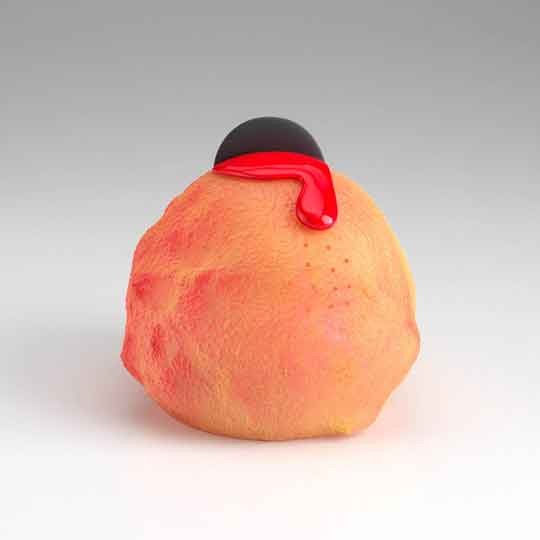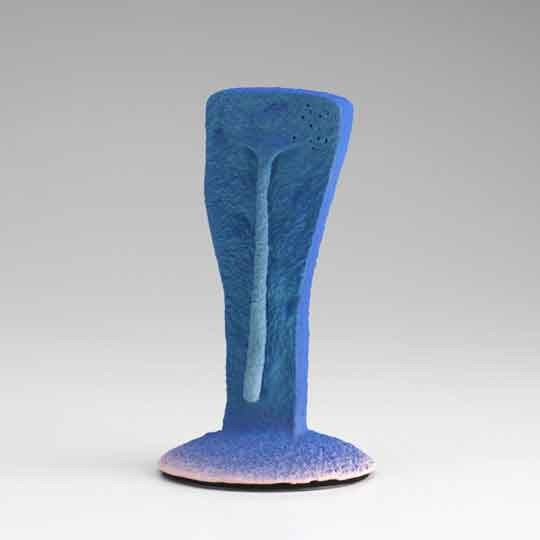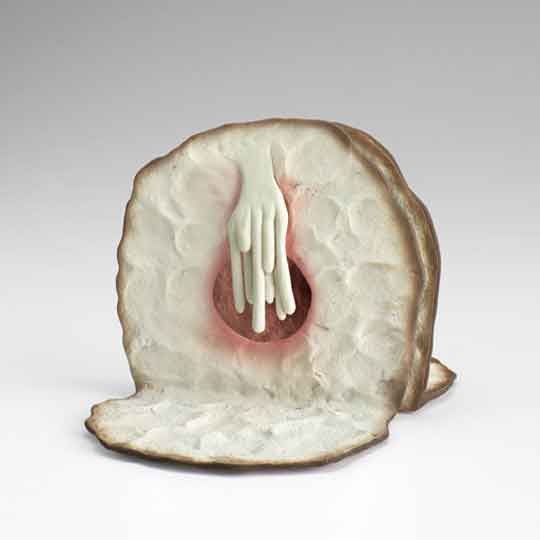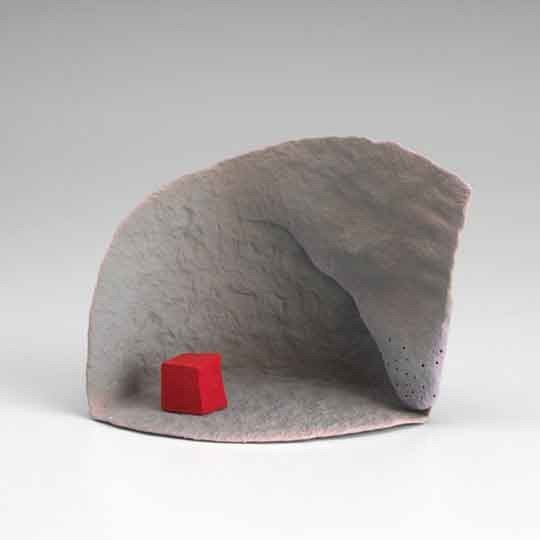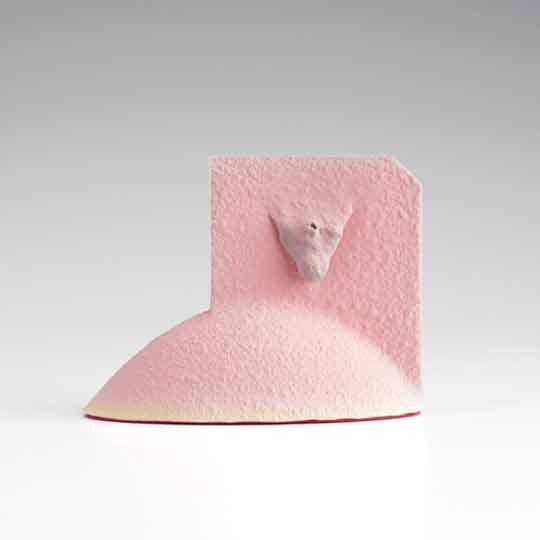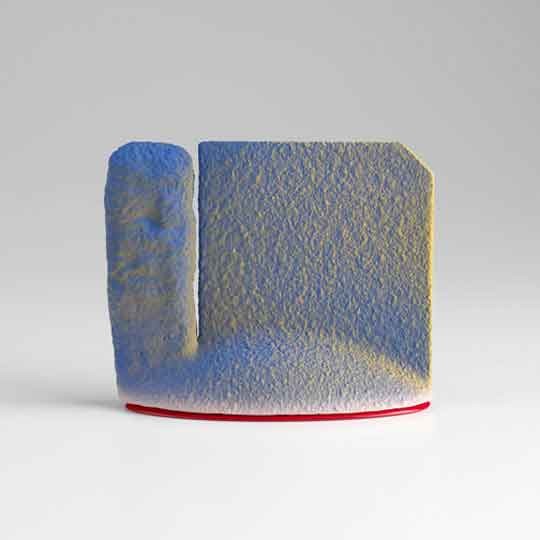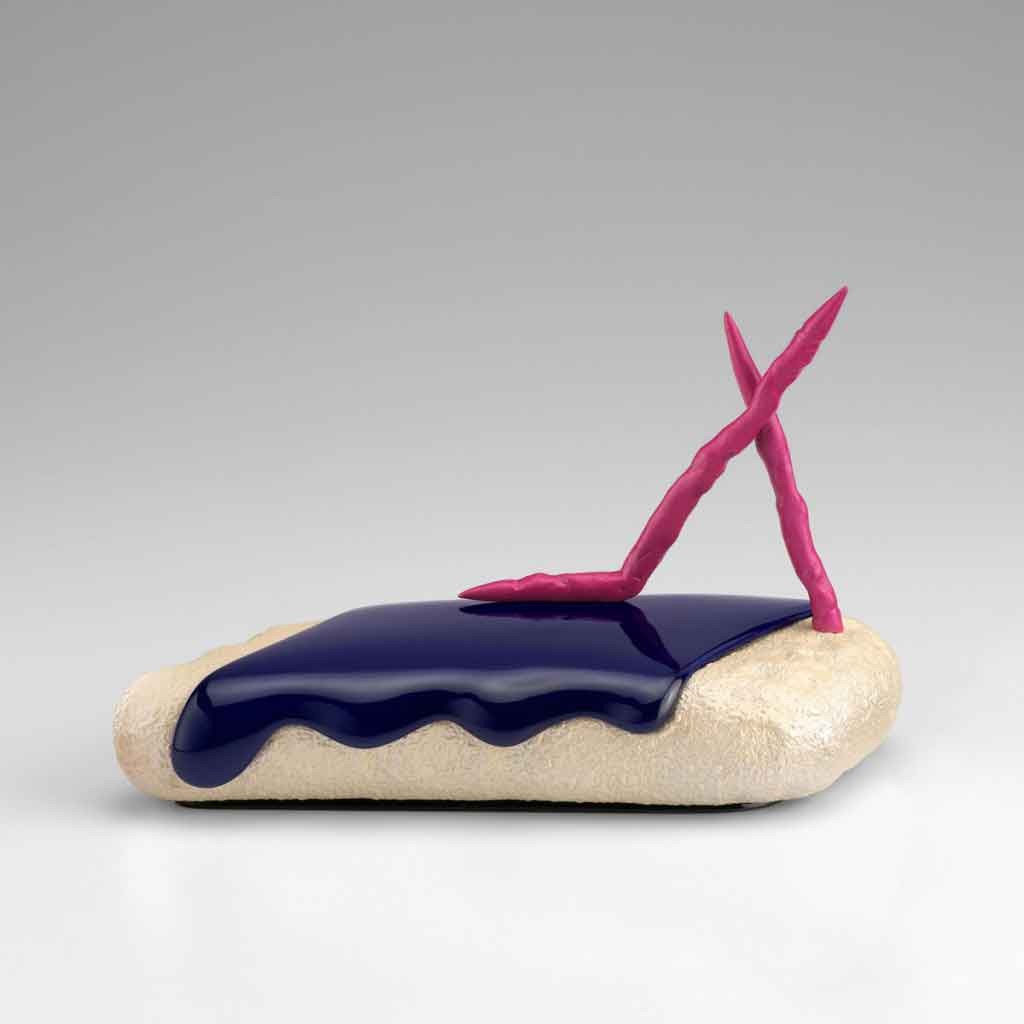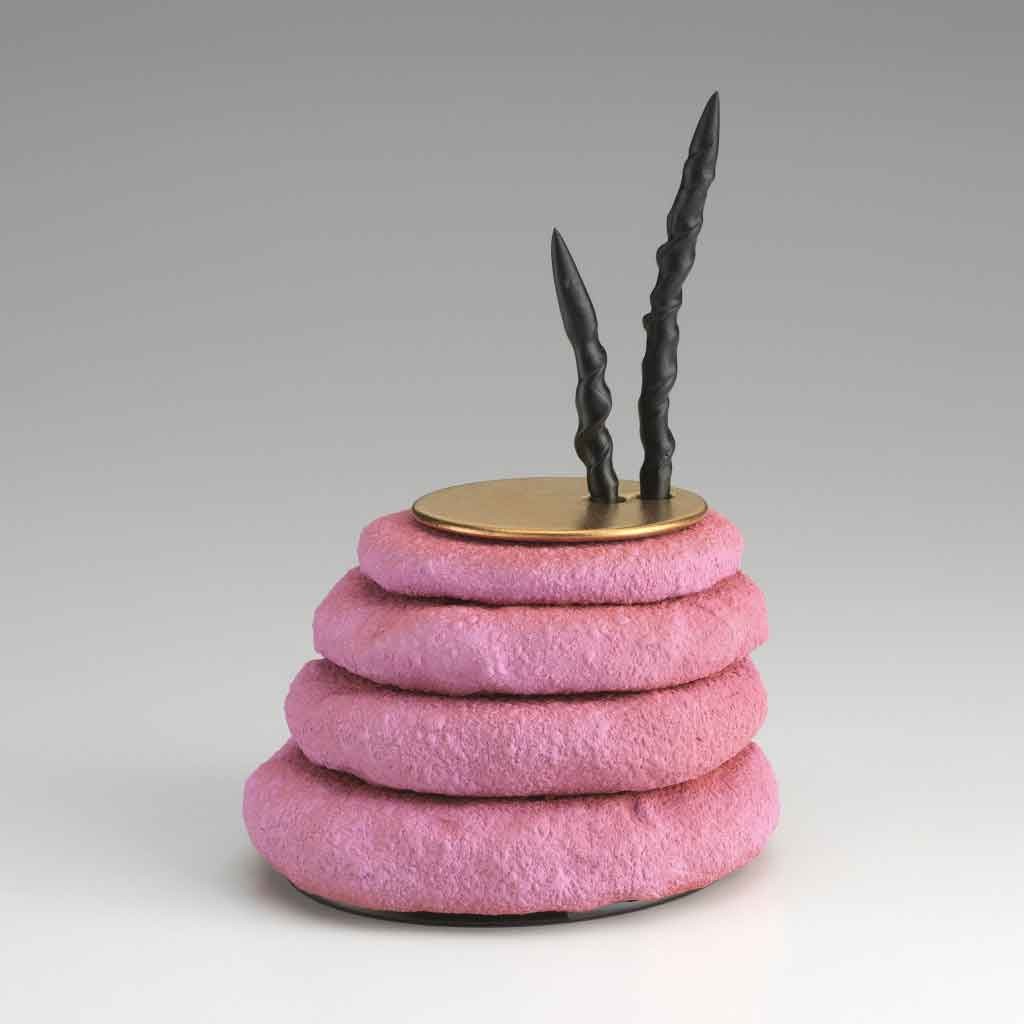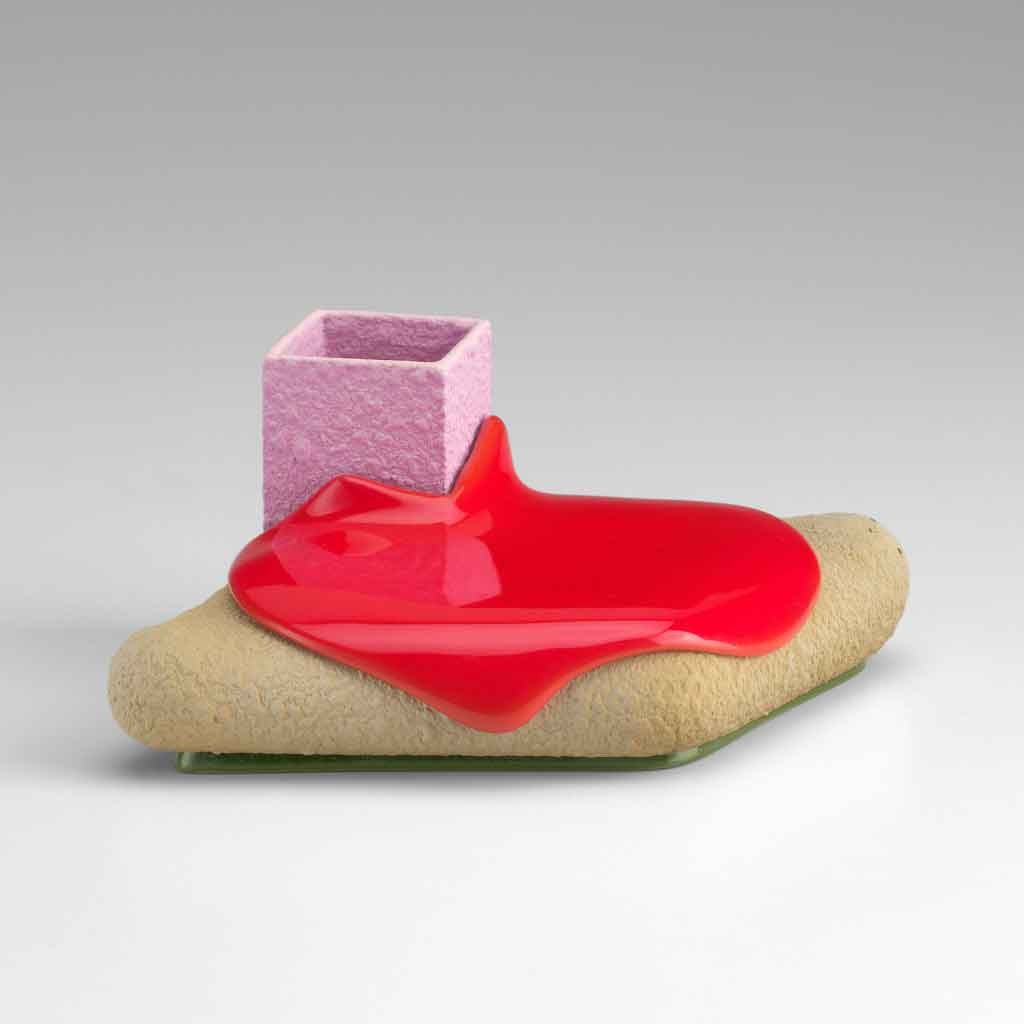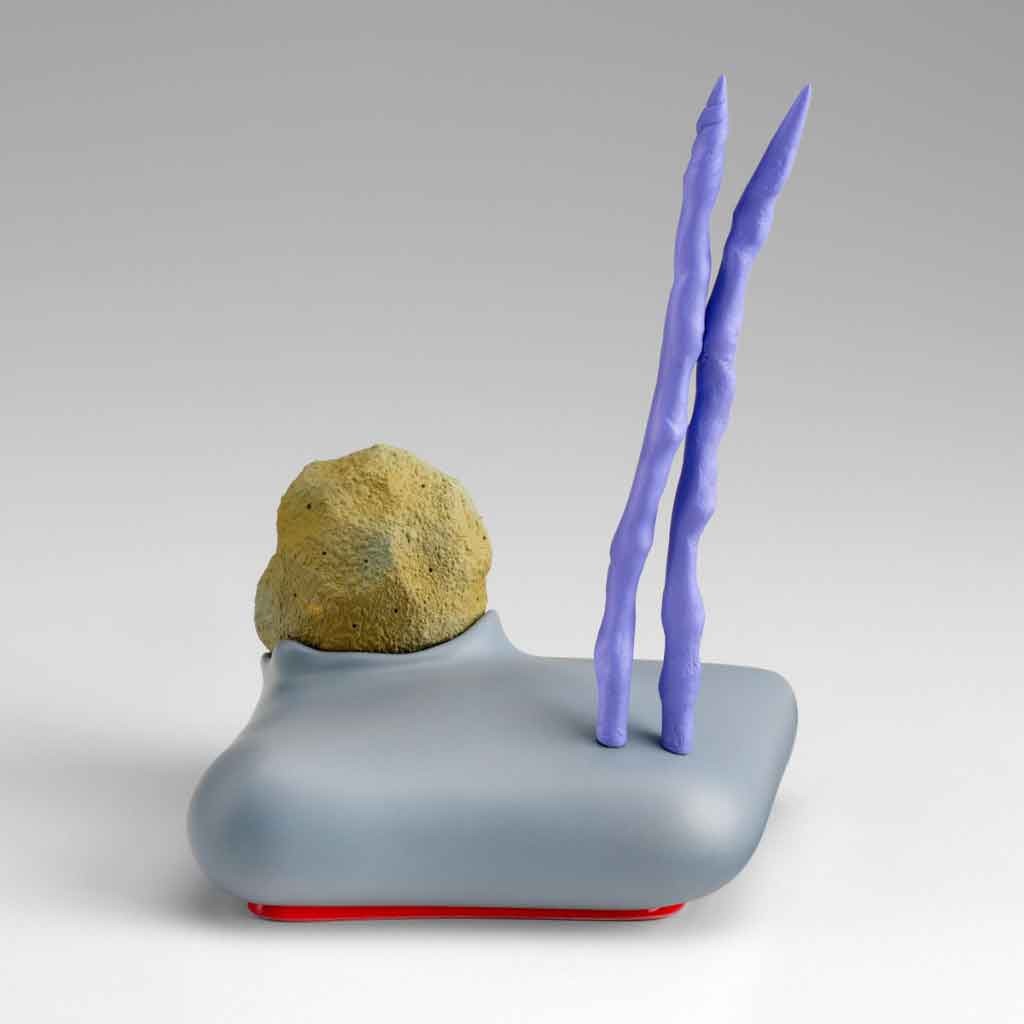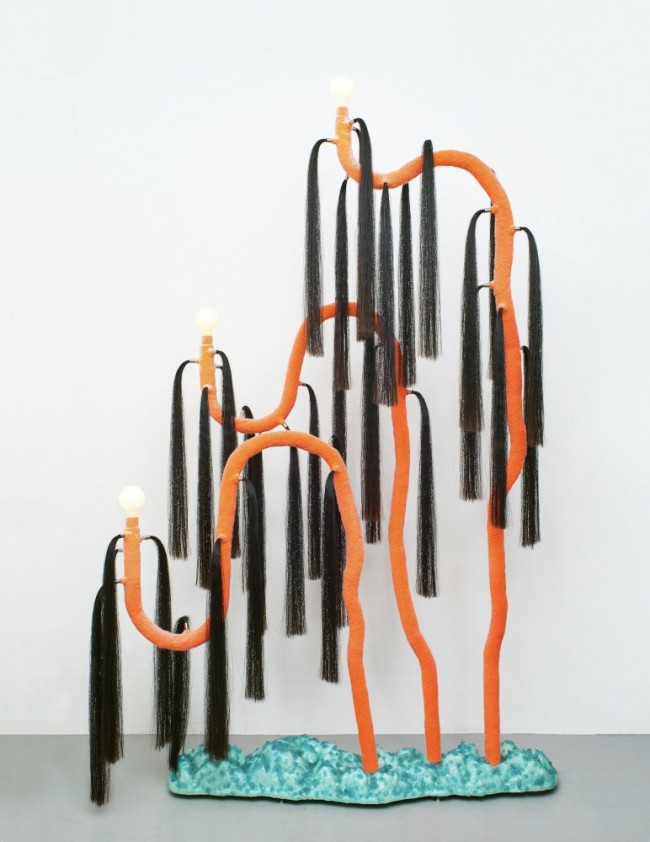CALIFORNIA ARCHITECTURE INSPIRES RON NAGLE’S TINY SCULPTURES
For the past forty years Ron Nagle has generated a massive body of work comprising pieces scarcely larger than five inches in every dimension. Each boasts the presence of a monument covered in variations of fine stucco textures sprayed with layers of pastel, blush fields often overtaken by thick glazed pools and electric pinstripes. The pieces begin as collections of hand sculpted elements, and are slip cast, carved and fitted to each other, gaining their deep beds of color from multiple firings that are finished with chinapaint. The forms have shifted in theme through his career: from lean green tendrils hailing from ikebana to diorama scenes housing pulsing red cubes. Nagle’s most current work is inspired by the sculptural layers of Hawaiian burial mounds, a collection that joined decades of work included in his first ever solo museum show, Ron Nagle: Peripheral Cognition, at the San Diego Museum of Art.
One set in particular nods to a more extreme influence, a grouping he created in the 1980s, which, together with some more recent throwbacks, Nagle calls “Archimetrics,” a word he made up while poking at the pretense of academia to describe the combination of “architecture” and “geometrics.”
These forms cite the California architecture that Nagle grew up with: “A lot of the riffs in my work are copped from what was being built in the 1940s, a bastardized hybrid,” he says. “I started looking back at Deco architecture, Mexican, stucco, the transformer coverings on neon signs outside of bars where you’ll have this real simple curve that turns into a triangle and that turns into a flat, fantastic shape. That simplicity and the pastel color were a big influence.”
At his residence and studio, a renovated earthquake home in San Francisco, Nagle has a king’s view overlooking Bernal Heights and the Twin Peaks, mounds that — much like his forms — rise out of the medial landscape populated with his native pastel cubes and prickly contemporary buildings further downtown. Nagle emphasizes that fans, which include the fashion designers Jack McCollough and Lazaro Hernandez of Proenza Schouler, have enthusiastically envisioned the Archimetrics as drastically larger, and it’s hard not to imagine him orchestrating the rise of Purple Slab and Green Archimetric from the lookout. Gazing over an image of Blue Two Step he remarks, “This could be an interesting building. Maybe we’re at the tip of something new.”
Ron Nagle is represented by Pierre Marie Giraud, Brussels.



